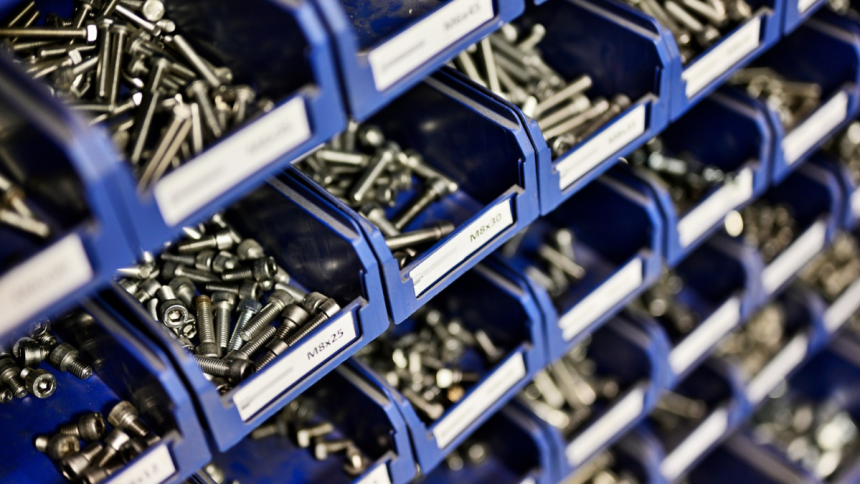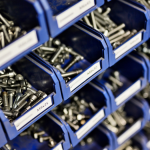Upgrading a deck or building a structure, ever thought about what all goes into creating those realities? Whether it is building a home or a huge marine vessel, the right choice and practice of hardware installation are vital to ensure the structure’s safety and durability. What if the chosen fasteners, or the way they were installed, were not up to the standard? This would have a significant impact on your, say, deck’s structural ability to endure natural conditions and the test of time.
Knowing deck hardware
Deck hardware consists of a variety of components, commonly:
- Post anchors
- Railing brackets
- Joist hangers
- Bolts, screws, and lag screws
- Ledger board fasteners
- Hidden fastener systems
Every hardware component caters to specific purposes to ensure load-bearing capacity, maintenance of structural alignment, and resistance to drastic environmental stressors.
For decks built near or over water bodies, or in coastal areas, special grade marine fasteners are critical to prevent any risks of corrosion that might lead to premature structural or system failure. These marine fasteners are crafted using high-grade silicon bronze or stainless steel, which are prioritized for their incredible tolerance to humidity and saltwater.
Essential tools for deck hardware installation
Before working on any marine deck project, the following tools are essential to warrant precise and secure installation:
- Impact driver or Cordless drill: Suitable for driving bolts and screws efficiently.
- Hammer: Used to tap items or nail-in hardware into place.
- Socket set or Torque wrench: Help secure bolts with the required torque specifications.
- Measuring tape and square: Achieve accurate angles and measurements for stability.
- Chalk line: Used to align layout lines or ledger boards.
- Level: Leveling ensures even surfaces, preventing future structural movements/shifts.
- Screwdriver set: Comes in handy for minor adjustments and small fittings.
- Nail gun (Optional): Useful for quick fastening of framing connectors or joist hangers.
Using the right tools speeds up and simplifies the installation processes while enhancing the accuracy and reliability of hardware placements.
Selecting the right marine fasteners
Even though minor, fasteners are one of the foundational components of any deck installation. So, the selection of them is commonly dependent on:
Material
- Grade 316 or 305 Stainless steel: This material is ideal for use in structures with constant saltwater exposure or coastal environments. Type 316 is especially superior in its resistance capacity, and thus is a prioritized marine fastener.
- Silicon bronze: This alloy is less common in marine fasteners, yet is an excellent choice for its lustrous appearance and corrosion resistance in marine installations.
- Hot-dip galvanized: This is a cost-effective option for common outdoor use but is less suitable for application in salty or high-moisture conditions.
Compatibility
You must ensure that your marine fasteners are compatible with the composite materials or type of wood you will be using. Choose fasteners with high resistance to chemical corrosion for pressure-treated lumber.
Size and length
Use fasteners of the perfect measurements, perfect to penetrate and hold the connecting materials securely without any risk of protruding. For instance, standard deck screws are primarily found to be at least 2.5″ to 3.5″ long.
Installation tips and techniques
As much as it is important to pick the right hardware components, proper installation is also important. Below are a few practical tips you can follow:
- Pre-drilling: When working with composite boards or hardwoods, pre-drilling holes is an essential practice to prevent wood splitting and smoother installation, along with accurate alignment of fasteners.
- Countersinking: If you are using finishing plugs or caps, make sure to use countersink bits to pause the screw heads. This gives the installation an aesthetic appeal while also preventing snagging or tripping.
- Avoid overdriving: Using excessive torque can instead damage the boards or strip the screws. To avoid overdriving, set your impact driver or drill to a moderate setting and adjust accordingly depending on the material resistance.
- Space boards properly: Avoid warping or mold buildup after installation by keeping uniform gaps, likely about 1/8″ to 1/4″, between deck boards, leading to sufficient water runoff and wood expansion.
- Fastener patterns: Based on aesthetics and structural requirements, ensure to follow a consistent pattern during fastener installations, whether in a straight inline or diagonally across from each other.
Best practices for coastal and marine decks
Here are a few upgraded standards or practices to follow when building decks exposed to salt-laden air, brine, and high moisture.
- Use only marine-grade materials: It is best suggested to use marine fasteners for all metal hardware and fasteners, especially Grade 316 stainless steel. This material category is highly corrosion resistant, durable, and offers an extended lifespan for decks even in salt-rich and humid environments.
- Seal penetration points: Every point where fasteners are installed pierces through the structural or decking wood, creating a gap for a potential water entry point. These holes or gaps must be sealed or coated using high-quality marine sealant. You can also use screw heads to avoid potential rotting.
- Inspect annually: High salinity and changing moisture accelerate wear and tear. So, make a routine to conduct annual inspections for possible signs of loose hardware, wood damage, or corrosion. Any signs of degradation must be quickly replaced with brackets or marine fasteners.
Hidden fastener systems
Hidden fastener systems are becoming a new favorite for marine installations, as they provide a sleek and nail-free deck surface. These new systems:
- Offer a smooth, clean, and barefoot-friendly surface
- Preserve the board’s appearance and integrity
- Compatible with numerous composite decking materials.
Despite enticing perks, these hidden fastener systems might not be ideal for every decking type. Even if used, they might need a particular joist configuration or spacing.
Closure
Correctly installing deck hardware is essential to achieve structural safety, appearance, and longevity. From choosing the perfect marine fasteners to following the best installation practices, it is also essential to be mindful of safety and building marine code compliance. Every step that you follow with care contributes to developing a reliable and sustainable structure. So, make sure to invest in high-quality marine materials and follow the suggested tips and practices to reap benefits for a long time.
Lynn Martelli is an editor at Readability. She received her MFA in Creative Writing from Antioch University and has worked as an editor for over 10 years. Lynn has edited a wide variety of books, including fiction, non-fiction, memoirs, and more. In her free time, Lynn enjoys reading, writing, and spending time with her family and friends.















